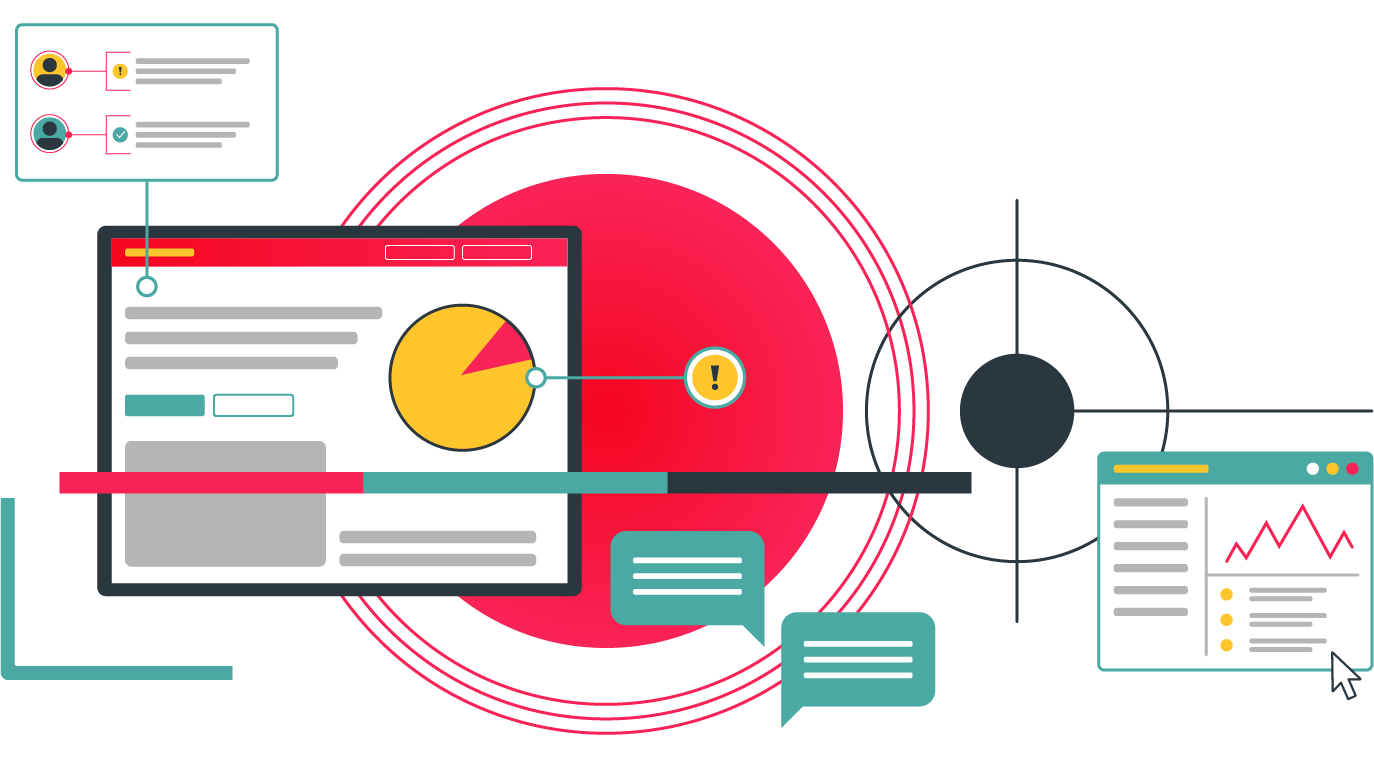"....you must kill all your darlings."
When William Faulkner wrote these words, he was talking about writing, but he could have easily been talking about web design.
Why? Because when you launch a new website, it’s hard to know which parts you’re overly attached to. It’s easy to fall in love with your own work and believe that every page, button, and headline is pure genius. So many darlings!
And honestly? That illusion usually holds up just fine… until launch day.
But once real users start clicking around—and feedback starts rolling in—reality hits. Maybe a page you thought was crystal-clear confuses visitors. Maybe your shiny new funnel leaks like a sieve. Suddenly, that “perfect” design doesn’t feel so perfect anymore.
That’s okay. In fact, it’s totally normal. And it should be embraced.
Once people start interacting with your site in the real world, new opportunities for improvement naturally show up. That’s why we’re big believers in growth-driven design—an ongoing, strategic approach to refining your site (and improving your business results) over time.
Of course, it’s not just about being open to change—you also need to figure out what to change, and how. That’s where analytics and usability testing come in. Together, they help you identify what’s not working and how to fix it.
Find the Problems with an Analytics Review
Your starting point is a review of how people are actually using your site. We usually recommend giving your site about 60 days post-launch to collect meaningful data.

Google Analytics is a great first step, but if you’re using a platform like HubSpot, dig into those insights as well. And for a more visual approach, try tools like Hotjar or Heatmap to generate heatmaps and see where people are actually clicking (or not clicking).
When you’re combing through the data, keep an eye out for:
- Pages where people drop off the site completely
- Steps in your conversion funnel that aren’t working
- Whether your homepage or key landing pages are moving users into action
- Pages with high bounce rates or barely any time spent
- Areas where users should be taking action but aren’t
This part can get a little messy. You’ll probably end up chasing a few rabbit holes—and that’s good. The more curious you are, the better your understanding of how people are actually experiencing your site.
Once you’ve gathered your notes, it’s time to prioritize. Narrow your findings down to the top 5–7 things you want to test further. Heads up: some of your favorite features might not make the cut.
Find the Fixes with Usability Testing
Analytics will tell you what’s broken. Usability testing will show you why—and help you figure out what to do about it.
Here’s how it works:
We recruit a handful of testers (usually five) who match your target audience and walk them through a 45-minute session with a moderator. Five might not sound like a lot, but in most cases, that’s all it takes to uncover the major problems. You can always test with another group later, once you’ve made some updates.

During these testing sessions, we like to follow a script of questions. As an example, here’s one we’ve used with a client in the past. This is a general script, but you can easily decide to test a very specific section of your site with more specific actions, or even a process like a checkout or purchase process.
- Look at this page and tell me what you make of it.
- Based on the information you see, how would you describe what [company] does as a company?
- Does the information on what [company] offers as a company seem clear to you?
- How intuitive do you feel the navigation is? Is it easy to find things?
- Imagine you wanted to learn more about, say, [company product]. How would you go about doing that?
- Now imagine you are looking for [company product] help. How would you find [company’s] specific solutions in this area?
- Now imagine you’re looking for upcoming events? Where would you go to find them?
- Ok, let’s imagine you are interested in staying in touch with [company], how would you sign up for email updates?
- Digging a little deeper, imagine you want to make contact with [company]. How would you go about scheduling a meeting with one of [company] experts??
- Can you tell what resources [company] provides? Where would you go to find them?
- Let’s talk about [company] partners. How would you find information about them?
- Do you feel there is enough information about them, too much, or too little?
- What about [company] social links? Are they easy to find? Do you think they should be more prominent?
- After browsing this site, can you please explain who [company] is and what they do?
Look, to be completely honest, watching these sessions can be rough. As in, reach for a drink rough.
You’ll find yourself silently begging users to click a button you thought was clearly marked. Or wincing as someone hits “purchase” and then can’t figure out how to download the thing they just bought (yep, we’ve seen that one before).
But those awkward moments? They’re pure gold. They bring your site’s flaws into focus. And a lot of the time, the fixes are surprisingly simple.
After a session, we usually walk away with a short list of 5 or 6 high-impact updates that only take a few hours to implement but dramatically improve the user experience. That’s why we recommend running usability tests regularly, as often as once per quarter.
Don’t Be Afraid to Kill Your Darlings
All of this is tough, but necessary. The things you love most about your site might be the very things holding it back. With the right mix of analytics and usability testing, you’ll see what’s working, what’s not, and how to fix it.
Your users will notice. And they’ll thank you for it with better engagement, higher conversions, and a site that actually works the way they need it to.
So yeah—go ahead and kill those darlings.
This article was posted in 2023 and has been updated with new insights.
Don’t miss out, get Brave News now
Join the ABN community and be the first to learn about trends in inbound marketing, branding, and web design.







